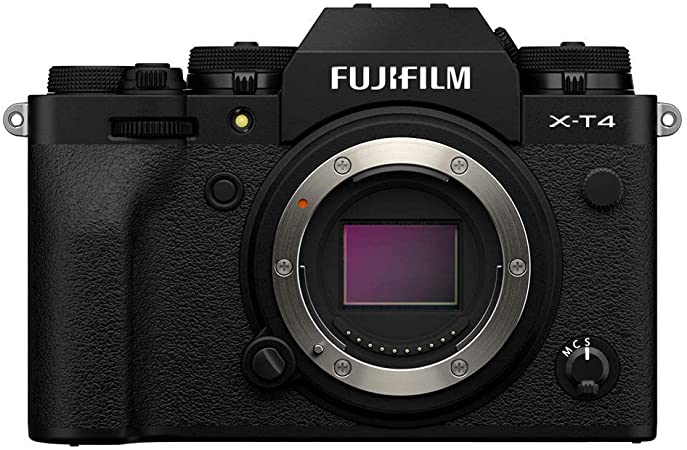How to make money through Photography

As a photographer, there are countless ways to turn your passion into a profitable career. From selling fine art prints to teaching workshops, the options for monetizing your skills and artistry are virtually endless. However, with so many possibilities, it can be difficult to know where to start. In this blog post, we will delve into the best ways to make money through photography and provide tips and insights for finding success in each avenue. From freelance commercial work to stock photography, we will cover a range of options for photographers at any stage of their career. Whether you’re just starting out or looking to diversify your income streams, this post will provide valuable information and guidance for turning your love of photography into a profitable business.
Selling Your Photographs as Fine Art
One of the most popular ways for photographers to monetize their work is by selling fine art prints. Fine art prints are high-quality, museum-grade prints of your photographs that are intended for display and appreciation as works of art. There are several options for selling fine art prints, including online platforms, galleries, and art fairs.
One of the most common ways to sell fine art prints is through online platforms such as artnet, Saatchi Art, and Artsy. These sites allow you to create a portfolio of your work and set your own prices. It’s important to carefully consider your pricing strategy, as the fine art market can be competitive. Make sure to research the going rates for similar work and consider factors such as the size of the print, the medium (such as archival paper or canvas), and the edition size (if applicable).

In addition to online sales, you can also sell fine art prints through in-person galleries and art fairs. Gallery representation can be highly coveted, as it can provide a level of validation and exposure for your work. However, it can be difficult to get representation with a gallery, and it’s important to do your research and approach galleries that are a good fit for your work. Art fairs, on the other hand, can be a more accessible way to sell your work in person and can be a great opportunity to connect with collectors.
Finally, it’s important to build a strong portfolio and online presence to showcase your work. This can include a website or social media accounts where you can share your images and information about your prints. By building a strong brand and connecting with potential collectors, you can increase your chances of success in the fine art market.
Tips for getting representation with a gallery:
- Research galleries that are a good fit for your work and target audience
- Create a professional portfolio and CV to showcase your work and experience
- Consider joining a local or national artists’ association to connect with galleries and other artists
- Be proactive in reaching out to galleries and following up on opportunities
Tips for participating in art fairs:
- Research art fairs that are a good fit for your work and target audience
- Prepare a professional portfolio and CV to showcase your work and experience
- Consider the costs of participating in an art fair, including booth fees, shipping, and travel expenses
- Have a clear plan for promoting and selling your work at the fair
Freelance Photography for Commercial and Editorial clients

Freelance photography can be a lucrative way to make money with your camera. In this type of work, photographers are hired on a project-by-project basis to create images for commercial and editorial clients. These clients can include businesses, magazines, and online publications.
One of the key benefits of freelance photography is the freedom and flexibility it offers. You have the ability to choose the projects that you work on and to set your own schedule. However, freelance work can also be unpredictable and it can take time to build a steady stream of clients.
To find freelance photography work, it’s important to have a strong portfolio that showcases your style and abilities. This can include a mix of personal work and commissioned projects. It’s also helpful to have a website or online portfolio that potential clients can access to learn more about you and your work. Networking and building relationships with other photographers, art directors, and clients can also be a valuable way to find work.
When working with freelance clients, it’s important to be professional and to have clear communication and expectations around the project. This can include discussing the scope of the work, the payment terms, and any deadlines or deliverables. Having a contract in place can help to protect your rights and ensure that both parties are clear on the terms of the project.

Types of clients that hire photographers for commercial and editorial work:
- Businesses (such as restaurants, retailers, and hotels)
- Magazines and print publications
- Online publications and websites
- Advertising agencies
- Event planners and coordinators
Tips for finding and pitching to potential clients:
- Create a strong portfolio that showcases your style and abilities
- Have a professional website or online portfolio that potential clients can access
- Network with other photographers, art directors, and clients to find opportunities
- Be proactive in pitching your work to potential clients
- Have clear communication and expectations around the project, including payment terms and deadlines
- Consider using a contract to protect your rights and ensure that both parties are clear on the terms of the project.
Stock Photography
Stock photography is the sale of photographs that can be licensed for specific uses, such as for use in advertising, marketing materials, or online content. Stock photos are typically sold through agencies that represent photographers and make their images available for purchase.


One of the benefits of stock photography is that it can provide a passive income stream for photographers. Once you’ve uploaded your images to an agency, they can be sold multiple times to different clients, allowing you to potentially earn money from your work on an ongoing basis. However, it’s important to be aware that the market for stock photography can be competitive and the fees paid for stock images are often lower than those for custom work.
It’s also important to optimize your images for stock sales, which can include using relevant keywords and titles, and providing high-quality, well-composed images that are in demand by clients.
Pros of selling photos through stock agencies:
- Passive income stream
- Potential to earn money from your work on an ongoing basis
- Convenient way to sell your photos without having to actively seek out clients
Cons of selling photos through stock agencies:
- The market for stock photography can be competitive, with many photographers vying for the same buyers
- The fees paid for stock images are often lower than those for custom work
- It can take time and effort to optimize your images for stock sales and to research and submit to the right agencies
Teaching Photography Workshops and Classes
If you have a passion for photography and enjoy sharing your knowledge and skills with others, teaching photography workshops and classes can be a rewarding and lucrative way to make money. There are several options for teaching photography, including in-person workshops, online courses, and one-on-one coaching.
To create and teach a successful workshop or class, it’s important to have a clear focus and target audience. This can help you to create a syllabus and lesson plan that meets the needs and interests of your students. It’s also helpful to have a clear marketing plan in place to promote your workshop or class. This can include using social media, email lists, and local marketing to reach potential students.
One of the benefits of teaching photography is that it can provide a flexible and rewarding source of income. You have the ability to set your own schedule and to teach as much or as little as you like. Teaching also allows you to share your passion for photography with others and to make a positive impact on their lives.
Options for teaching photography:
- In-person workshops and classes, which can be held at a local venue or studio
- Online courses, which can be accessed by students from anywhere in the world
- One-on-one coaching, which can be a more personalized way to work with students
Tips for creating and promoting a successful workshop or class:
- Have a clear focus and target audience for your workshop or class
- Create a syllabus and lesson plan that meets the needs and interests of your students
- Use social media, email lists, and local marketing to promote your workshop or class
- Consider offering a range of workshop options, such as half-day or full-day sessions, or a series of classes
- Consider offering additional resources or materials, such as handouts or reference guides, to enhance the learning experience for your students.
Conclusion
As a photographer, finding the right revenue streams for your business can be a challenge. From selling fine art prints to teaching workshops, there are many different ways to make money with your camera. It’s important to find the avenue that works best for you and your business, and to be open to trying new things as your career evolves.
One of the benefits of being a photographer is the ability to diversify your income streams. This can help to provide a more stable financial foundation for your business and can allow you to explore different areas of photography. For example, you may choose to sell fine art prints while also taking on commercial or editorial work, or you may choose to teach workshops while also selling stock images. Diversifying your income streams can also help to reduce the impact of any fluctuations in a particular market.
Finally, it’s important to continue learning and growing as a photographer to stay competitive in a crowded market. This can include staying up to date with industry trends, investing in new equipment and software, and developing your skills and techniques. By continuously improving and expanding your expertise, you can set yourself apart from other photographers and build a successful career in the field.


